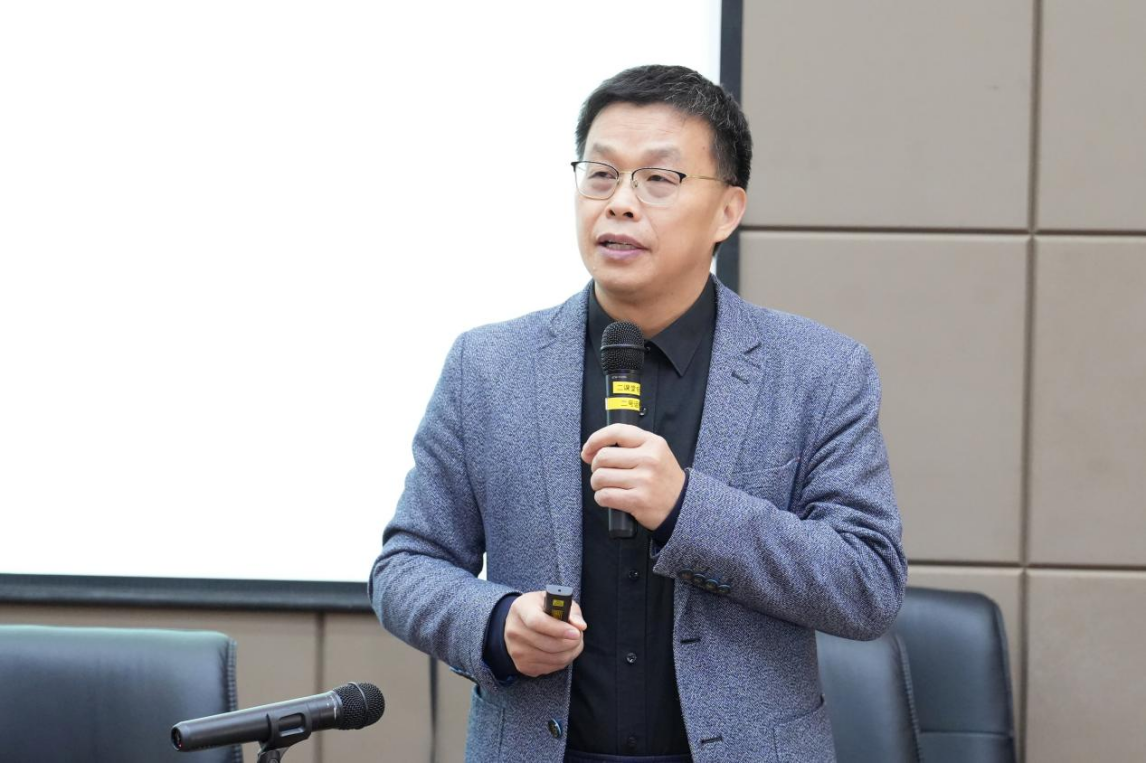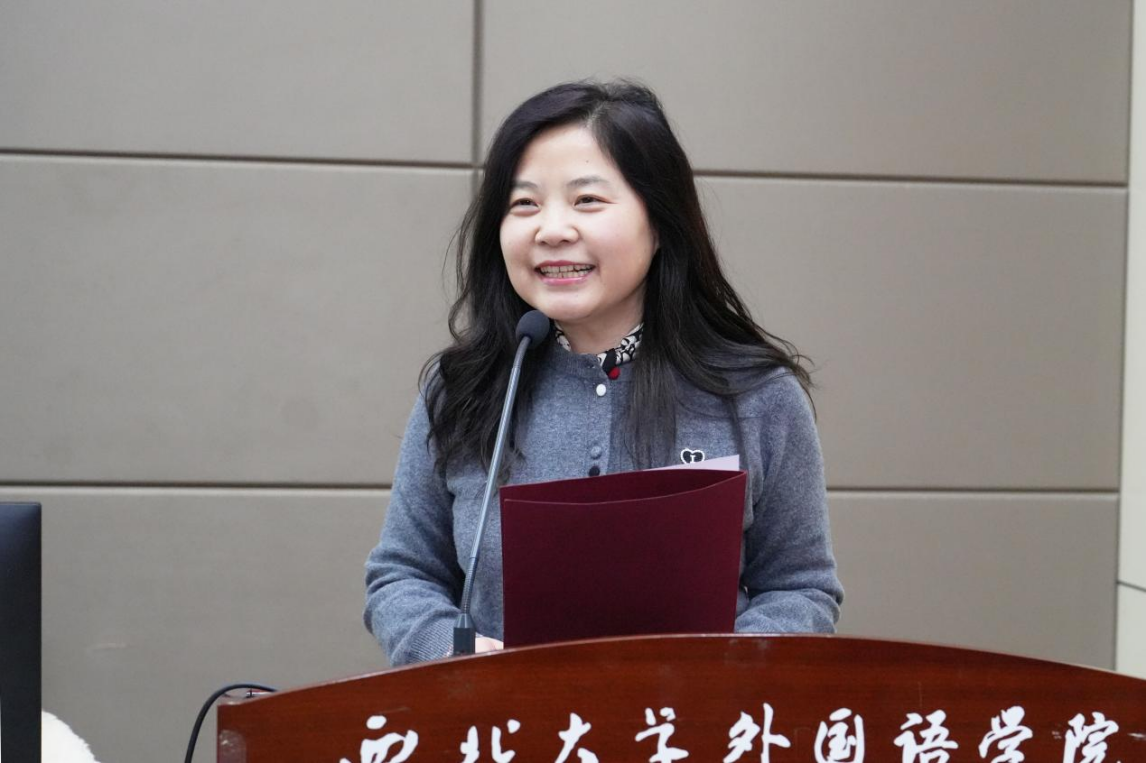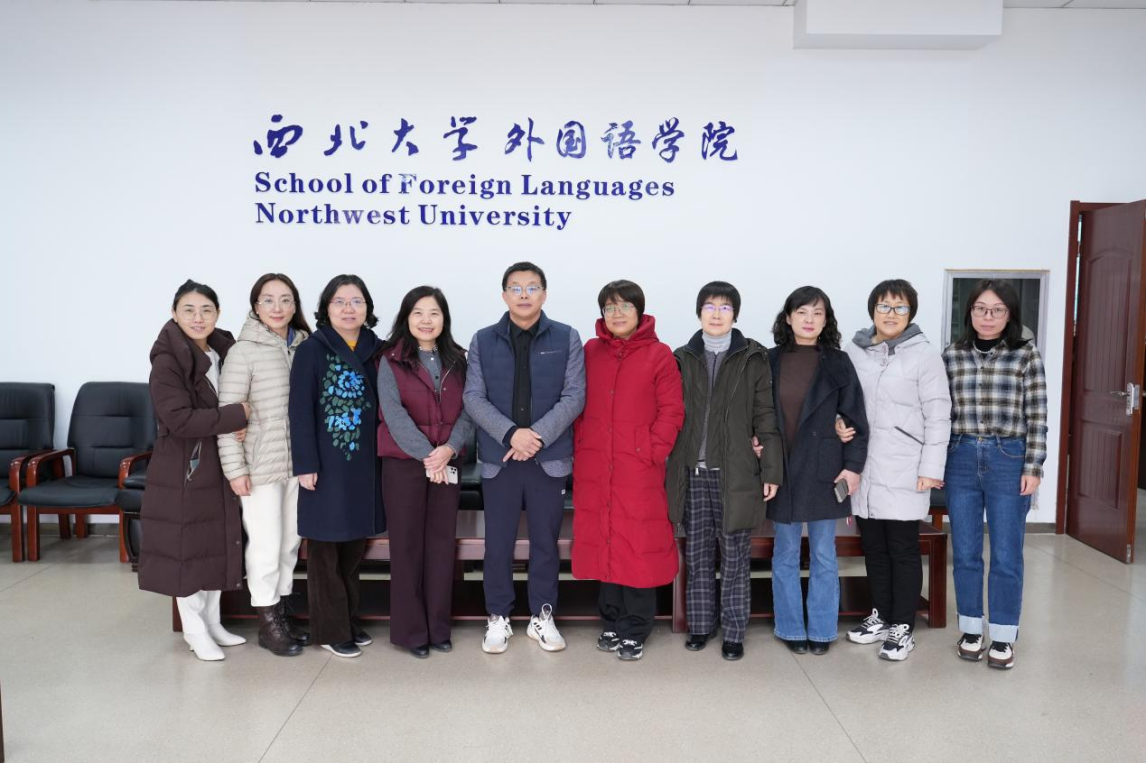On the afternoon of December 18, 2024, Professor Liu Xiaofeng, a professor at Xi’an International Studies University, Director of the Translation Research Center, and Chair of the Department of Translation at the School of English, delivered a lecture titled “Research on Translation without Source Text: Connotations, Methods, and Discipline Value” at the School of Foreign Languages, Northwest University, as part of its “Distinguished Scholar Lecture Series.” The lecture was hosted by Su Rui, Vice Dean of the School of Foreign Languages. Approximately 120 faculty and students from both within and outside the university attended the lecture.
Professor Liu Xiaofeng pointed out that a review of traditional translation studies, including translation practices, translation research, the writing of translation history, and the cultivation of translation talents, reveals a prominent characteristic: the focus has generally been on translations based on a single source text, which forms the basic framework. However, there is another category of texts, which are formed by combining fragmented source materials with writing and translation. In these texts, translation has often been obscured, shrouded in mystery, and has largely been excluded from the scope of translation studies. Yet, such hybrid texts, which combine translation and writing, have strong readability and communicative effectiveness, and should be incorporated into translation research. Given the actual forms of translation and the limitations of traditional translation research under its established cognitive framework, Professor Liu proposed a reclassification of translation studies. He introduced the concept of “translation without a source text” (无本译写), distinguishing it from traditional translation studies, which he referred to as “translation with a source text” (有本译写). His aim was to unveil the hidden aspect of translation in these hybrid texts. Thus, translation studies can be divided into “translation with a source text” and “translation without a source text.” He defined the research scope and content of “translation without a source text” as encompassing various areas, such as the behaviors, processes, dissemination, reception, research methods, quality evaluation standards, the writing of its history, the cultivation of relevant skills, and national policies related to the theory and practice of translation without a source text. He provided initial definitions for these concepts and discussed, with examples, topics such as research themes, methods, processes, and theoretical perspectives in this field. Professor Liu argued that, in the context of the new era of “Translating China” and “telling China’s story well,” research on translation without a source text is a new paradigm in translation studies that meets the demands of the times. He believes it is an important supplement to traditional translation research, offering significant theoretical, practical, and disciplinary value that cannot be overlooked.
At the meeting, Professor Liu Xiaofeng engaged in a discussion and exchange with the faculty and students on the concepts and research methods related to “translation without a source text.” He shared his thoughts and explorations over the past decade, presenting a new paradigm in translation studies. His insights inspired the faculty and students to adopt new perspectives and approaches in their translation research.

Professor Liu Xiaofeng

Host: Vice Dean Su Rui

Venue

Group photo
Text:Li Zhaoyan
Photo:Qu Yuanjun